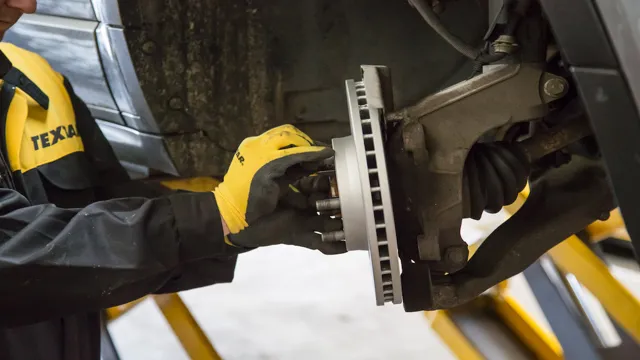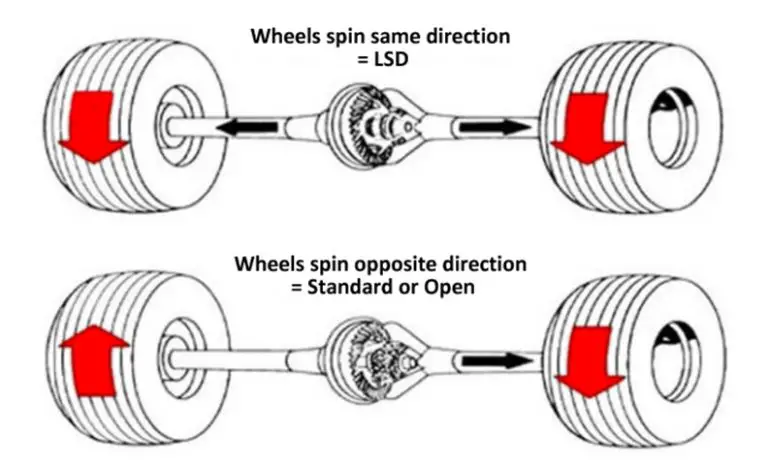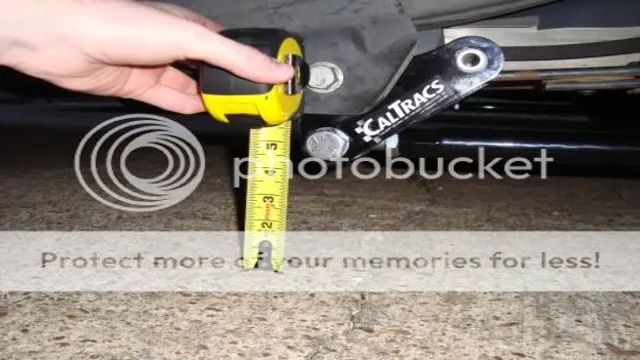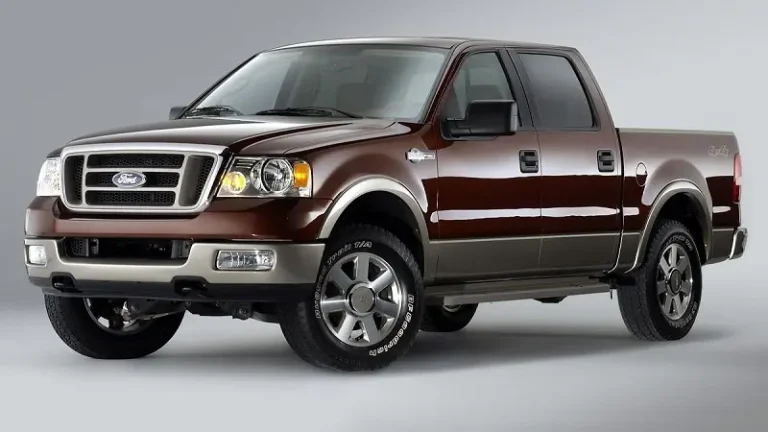Step-by-Step Guide: Inspecting Control Arm Bushings for Safe and Smooth Driving Experience
Have you noticed that your car has been pulling to one side or producing an unusual sound while driving? It could be a sign that your control arm bushings are worn out and in need of inspection. Failure to address worn control arm bushings can result in erratic steering, tire wear, and even suspension failure leading to a dangerous driving situation. If you’re wondering what the control arm bushings are and how to inspect them, you’re in the right place.
Essentially, control arm bushings are the connecting point between the suspension components and the vehicle frame, allowing for proper steering and handling. Over time, these bushings can crack or deteriorate, and therefore need to be inspected regularly to identify and prevent potential problems. Fortunately, inspecting control arm bushings is relatively easy and requires minimal skills and tools.
However, knowing what to look for and what to do is crucial in determining the extent of the damage. In this blog post, we’ll discuss how to check for faulty control arm bushings, what to look for during the inspection process, and how to replace them if necessary. So, buckle up and get ready to become a control arm bushing expert, as we take you through the simple steps to ensure the safety and longevity of your vehicle.
Tools You’ll Need
When it comes to inspecting control arm bushings, there are a few tools you’ll need to make the job easier and more efficient. First and foremost, you’ll need a jack to lift your vehicle off the ground and jack stands to support it. You’ll also need a ball joint separator to remove the control arm from the ball joint.
A pry bar and a torque wrench will also come in handy. Additionally, you may need a grease gun to lubricate the bushings after inspection. Having the right tools can make all the difference in the accuracy of your inspection and the safety of your vehicle.
Remember to always follow proper safety procedures when working with vehicles and equipment. By using the proper tools and taking the necessary precautions, you can easily inspect and maintain your control arm bushings to ensure your vehicle is in top shape.
Jack stands, Jack, Gloves
When it comes to working on your car, having the right tools is key to getting the job done safely and efficiently. If you’re planning on doing any work that requires you to lift the car off the ground, you’ll need a jack and jack stands. The jack is used to lift the vehicle, while the jack stands keep it securely in place so you can work without fear of it falling.
It’s essential to use both the jack and the stands properly, so be sure to read the instructions carefully before you begin. Additionally, wearing gloves is always a good idea when working on your car. They’ll protect your hands from dirt, grime, and any sharp edges that you may come across.
Investing in these tools and taking the time to learn how to use them correctly will make car maintenance a breeze, and you’ll have the peace of mind knowing you’re doing it safely. So, the next time you’re working on your car, be sure to have your jack, jack stands, and gloves at the ready!
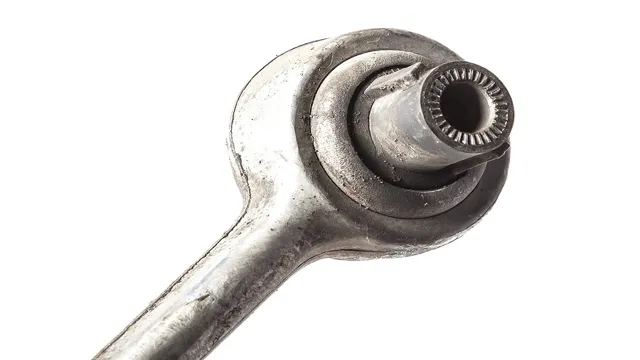
Locate Control Arm Bushings
Want to know how to inspect control arm bushings? Well, locating them is the first step! Control arm bushings are a vital component of your vehicle’s suspension system, and inspecting them regularly is crucial for your safety on the road. To locate them, look for two metal arms that attach to your vehicle’s frame and wheel hub. The bushings are located where the arms connect to the frame.
Once you locate them, you can start inspecting them visually. Check for any signs of wear such as cracks or tears. You can also try pushing and pulling on the arms to see if the bushings are loose.
If you notice any significant wear or looseness, it’s time to replace your control arm bushings to ensure optimal performance and safety on the road. By taking the time to inspect and replace your worn control arm bushings, you’ll experience more stable handling and smoother rides.
Examine Visible Signs of Wear
Examining visible signs of wear is an essential part of routine vehicle maintenance. When inspecting the suspension system, one of the most critical components to check is the control arm bushings. The control arm bushings are essential for the smooth operation of the suspension system, as they provide a cushioning effect that helps to absorb shock and vibrations.
To locate the control arm bushing, you need to inspect the area where the control arm connects to the frame of the vehicle. You should look for signs of cracking, tearing, or excessive wear. An obvious sign of a worn control arm bushing is a knocking or clunking sound coming from the suspension system.
If you notice any of these signs, it’s crucial to have the control arm bushings replaced immediately to prevent further damage to the suspension system. Failing to replace worn bushings can result in tire wear, poor handling, and decreased overall safety. So, it’s critical to pay attention to visible signs of wear and schedule routine maintenance checks to keep your vehicle operating smoothly and safely on the road.
Check for Free Play
When inspecting your vehicle’s suspension system, it’s important to check for free play to ensure a smooth and safe ride. One common area to check for free play is the control arm bushings. These bushings are designed to absorb shock and vibration from the road, protecting important suspension components from wear and tear.
Over time, however, they can become worn, cracked, or even completely deteriorate, which can cause excess play and instability in the suspension system. To locate the control arm bushings, simply lift the vehicle on a jack and look for the rubber bushings that connect the control arm to the vehicle’s frame. If you notice any signs of wear or damage, it’s important to have them replaced as soon as possible to maintain the safety and performance of your vehicle.
By keeping a close eye on your vehicle’s suspension system and addressing any issues promptly, you can enjoy a smoother, safer ride for years to come.
Test the Control Arm Bushings
If you want to ensure that your car’s suspension system is in tip-top shape, it’s essential to inspect your control arm bushings regularly. These bushings are responsible for absorbing shock and vibration, allowing your car to ride smoothly. To test these vital parts, place a jack under the control arm and lift the wheel off the ground.
Then, use a pry bar to move the control arm up and down. If you notice excessive movement or play, it could be a sign that the bushings are worn and need to be replaced. Additionally, check for any cracks or splits in the rubber housing of the bushings.
If you spot any signs of wear, it’s time to replace them. Neglecting to replace worn bushings can result in poor handling, tire wear, and even steering issues. So, if you want to ensure your car is safe and handles well, take the time to inspect your control arm bushings regularly.
Push and Pull on the Control Arm
If you’re experiencing unusual noises or vibrations while driving, it might be time to test your control arm bushings. One simple way to determine if your bushings are the issue is by performing a push and pull test on the control arm. First, block your wheels and lift the car so that the wheel and suspension hang freely.
Place a jack under the control arm and slightly lift it. Then, grasp the tire at the 3 and 9 o’clock positions and push and pull it towards and away from the car. If you notice any movement or looseness in the control arm, it’s likely that the bushings are worn and need to be replaced.
In some cases, a failing control arm can cause serious safety issues, so it’s important to take care of this issue as soon as possible. By keeping an eye on your control arm bushings and performing routine maintenance, you can help ensure your vehicle is running safely and smoothly on the road.
Use a Pry Bar to Wiggle the Control Arm
If you’re experiencing steering wheel vibration or uneven tire wear, it might be time to test your control arm bushings. One way to do this is by using a pry bar to wiggle the control arm. Start by positioning the pry bar between the control arm and the frame, then gently apply pressure.
If you notice any excessive movement or play in the control arm, it’s a sign that the bushings are worn and need to be replaced. The control arm bushings help to keep your vehicle’s suspension system aligned and stable, and worn bushings can lead to unsafe driving conditions. So if you feel that your vehicle’s suspension isn’t as tight as it should be, give the control arm bushings a check using this simple tool.
By doing so, you can help prevent expensive repairs down the road and ensure that your ride is always comfortable and safe.
Check for Noise
When inspecting your control arm bushings, it’s crucial to check for noise. This includes any clunking or rattling sounds when you hit bumps or make turns. These noises could indicate that your control arm bushings are worn out or damaged.
Additionally, if you experience vibrations in your steering wheel or feel looseness in your suspension, it’s worth taking a closer look at your bushings. It’s important to address any issues with your control arm bushings promptly to ensure your vehicle remains safe and drivable. By regularly inspecting and maintaining your control arm bushings, you can help extend the life of your vehicle’s suspension and improve your driving experience.
Listen for Clunks or Rattles
When it comes to the health and safety of your vehicle, it’s important to pay attention to the sounds it makes while driving. Clunks or rattles coming from under the hood can indicate a number of issues, including loose or damaged parts or worn-out components. For example, if you hear a clunk when you hit a bump in the road, it could be a sign that your suspension needs some attention.
On the other hand, rattling noises from the engine could signal a loose or damaged belt or a problem with the exhaust system. By listening for these sounds and addressing them promptly, you can help ensure your car stays in top condition and avoid costly repairs down the line. Don’t hesitate to take your car to a reputable mechanic if you hear any unusual noises coming from under the hood.
Your car will thank you.
Replace the Control Arm Bushings If Necessary
“Inspecting control arm bushings is a crucial part of maintaining your vehicle’s suspension system. Over time, these bushings can wear out or become damaged, causing a range of issues, from reduced steering responsiveness to uneven tire wear. To determine if your control arm bushings need replacement, you can visually inspect them for signs of cracking, tearing, or deterioration.
Additionally, you can perform a “bounce test” by pushing down on the front or rear of your vehicle and observing how it responds. If it bounces excessively or continues to bounce after you release it, it may be time to replace the bushings. While replacing control arm bushings can require some skill and knowledge, it is often a straightforward process that can be completed with the right tools and a bit of patience.
By taking the time to inspect and replace your control arm bushings as needed, you can help ensure a smooth, safe, and comfortable ride for years to come.”
Conclusion
Inspecting control arm bushings may seem daunting, but with these simple steps, you’ll be a pro in no time. Remember to keep an eye out for wear and tear, listen for any unusual sounds, and don’t forget to use a flashlight for those hard-to-see spots. And for those especially stubborn bushings, don’t be afraid to break out the big guns – a rubber mallet and some elbow grease can work wonders.
So go forth and inspect those bushings – your car (and your wallet) will thank you in the long run!”
FAQs
What are control arm bushings?
Control arm bushings are rubber or polyurethane components that provide cushioning and reduce vibrations in the control arm, which connects the wheel hub to the frame of the vehicle.
How do I inspect control arm bushings?
Inspecting control arm bushings involves checking for cracks, tears, and wear. You can do this by visually inspecting the bushings or performing a “bounce test” to see if there is excessive movement.
What are the symptoms of worn control arm bushings?
Symptoms of worn control arm bushings include clunking or rattling noises, vibrations in the steering wheel or chassis, uneven tire wear, and difficulty steering or maintaining control of the vehicle.
Can I replace control arm bushings myself?
Yes, you can replace control arm bushings yourself if you have the necessary tools and knowledge. However, it can be a challenging and time-consuming process, so it may be worth seeking the help of a professional mechanic.

